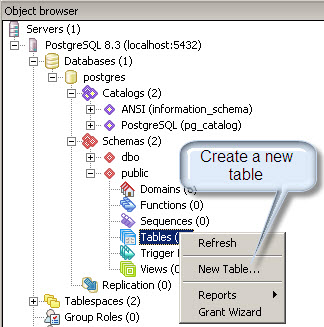

The COPY TO command is used to copy the tables in the database into the file by using the required delimiter. In this case, we have to use VACUUM command for cleaning the unwanted disk usages. These data are not visible but occupies the space in the disk. If the error occurs in between the COPY FROM operation, the operation will be stopped, but the data stored so far will not get deleted. We can use the HEADER in the command line which can be used to ignore the first line from the file while copying because it may contain the name of the fields. If the COPY command was successful, it will return COPY If the file contains the values only for the particular fields in the table, we have to explicitly give the field names along with the table_name.įor example, if the file has values only for field1, field2, and field3, but the table has many fields,ĬOPY (field1, field2, field3) FROM DELIMITER ‘, ’ CSV The above command assumes that the CSV file has the values for all the fields in the table with delimiter as comma(,) and the fields are ordered in the file the same as that of in the table. Importing from a file into Database Tableįor example if we want to import data from a CSV file into the database table, the following command is used. Moreover, it is recommended to use the same data type for the table columns as you have observed from the file.The COPY command in the postgreSQL is used for importing data in the files into the database table and also for exporting tables from the database to the file. The following command creates a table named “ employee” and three columns are created inside that table. As we have to map the data of the CSV file, the table must contain the same columns. Once you have created(or examined) the CSV file, you are good to go for creating a Postgres table. It seems that the id would be referred to as a primary key whereas the name and designation are in VARCHAR category. Based on the data observed from the file, a Postgres table is created. It is observed that there are three columns with Header named as “id”, “name”, and “designation”.

However, semicolon and tab may also be used to separate the database columns.įirstly, create a CSV file we will be using CSV file named “ staff.csv” and the snapshot of the data stored in our staff.csv file is displayed below: Header: This represents the head of each columnĭelimiter: Character used to separate two entries and comma(,) is used in this regard. There are two factors in a CSV file that must be considered to copy the data to a Postgres table. This section provides a step-by-step procedure to copy data from a local system into a Postgres table.
#POSTGRESQL COPY TABLE HOW TO#
How to copy data from a local system to a Postgres table

The upcoming section provides the usage of the COPY statement to import data from a file into a Postgres table. The COPY statement is divided into further two categories:ĬOPY TO: This will copy the data of the table to a file.ĬOPY FROM: Used to copy data of a file into the table.Īs we are considering here the copy from the local system to a Postgres table, thus in our case the COPY FROM statement would work. This article provides a step-by-step guide to copy data from a local system to a Postgres table. The COPY command in Postgres allows you to import data from a local instance to a Postgres table. Is it possible to load the data from your local system? Yes, Postgres provides assistance in this regard as well. The data in a Postgres table can be inserted using the INSERT query of Postgres and you must insert the data manually. Postgres being a relational database assisted by a dynamic querying mechanism makes it favorable for enterprises. It allows you to perform all the basic operations that a standard DBMS must be equipped with. Postgres is a multi-purpose database management system.


 0 kommentar(er)
0 kommentar(er)
